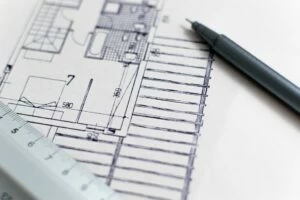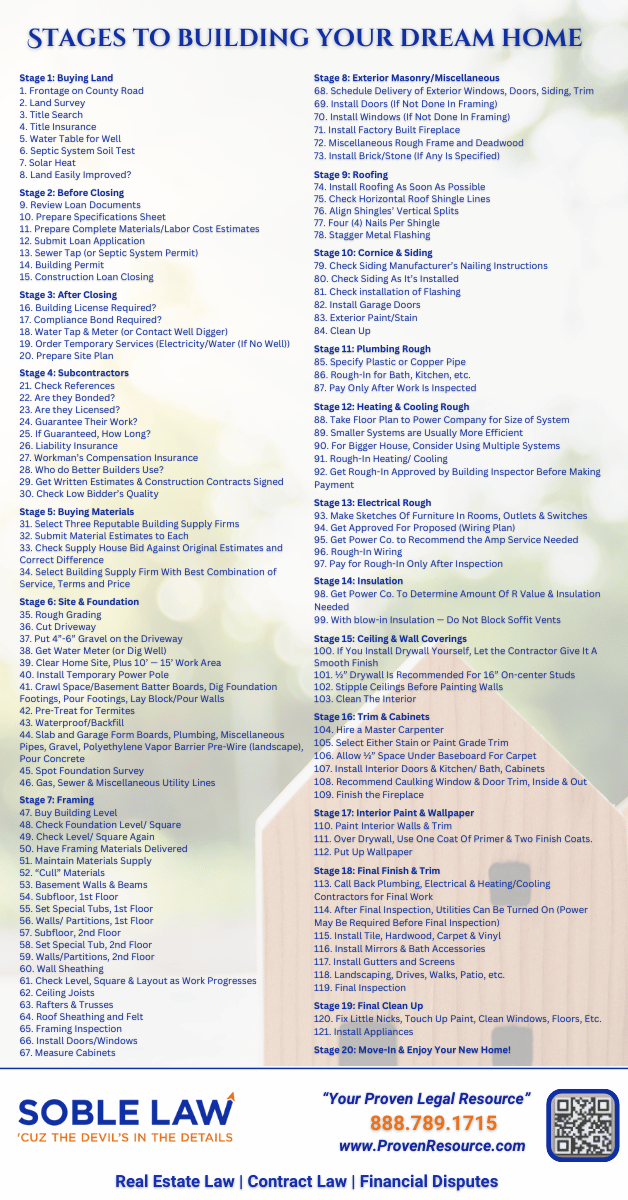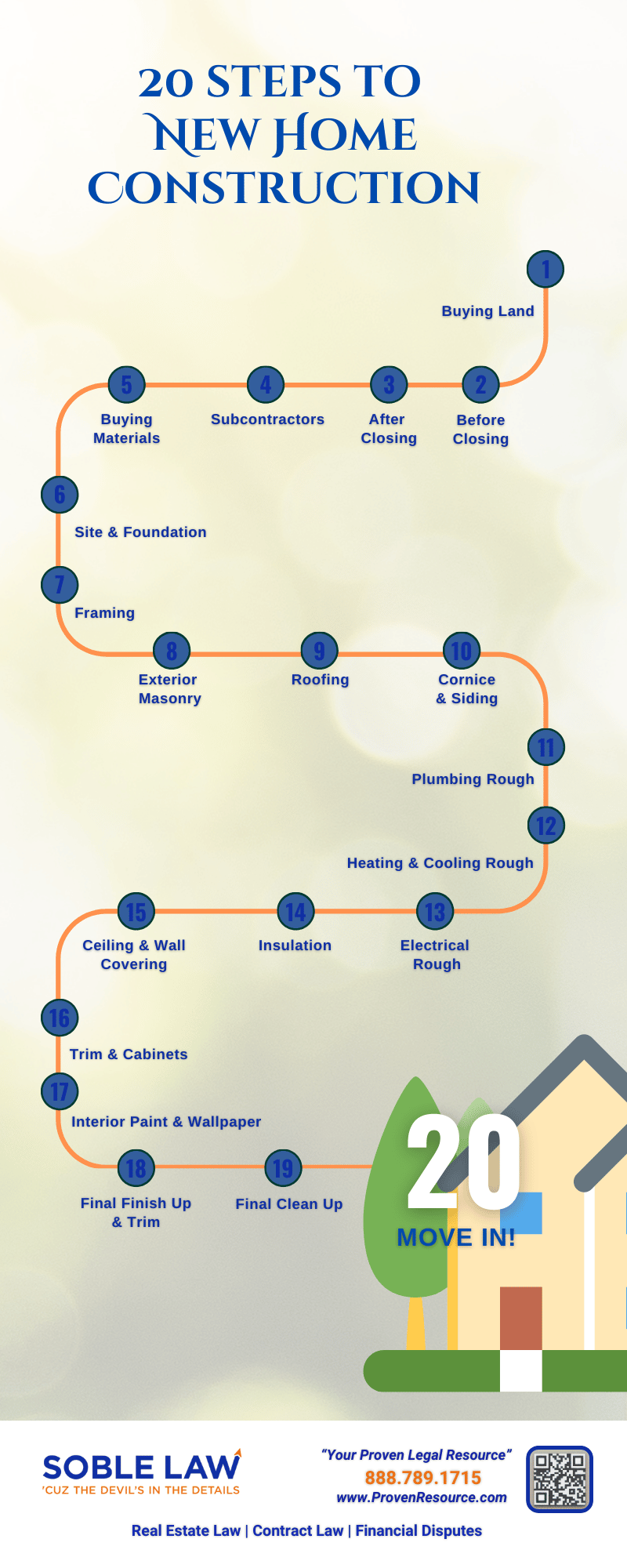
Did you know there are over 100 steps to building a new home?
If you’ve never built your own home before, we urge you before taking that initial step to review our checklist of all the things you need to do. There’s a handy infographic to the left of all the stages you’ll go through, and individual tasks within those stages to complete before moving ahead. If you’re a list person, this will be helpful in printing and crossing off as steps get completed.
Whether it’s certain stages of construction, or tests and inspections that need to be completed, this is THE list. Of course, we are also going to urge you to consult with a real estate attorney to create or review any of your agreements along the way. After all, you are hiring contractors to build, aren’t you? Then you need a construction agreement!
Don’t let faulty purchase agreements, building agreements, subcontractor agreements, title insurance, or your construction loan documents halt this amazing project you’re embarking on. And besides, if you need a network from which to draw from of good people, we can help with that too!
Without further ado, the 100 steps to constructing your own home.


If you liked what you read, check out our related YouTube videos

